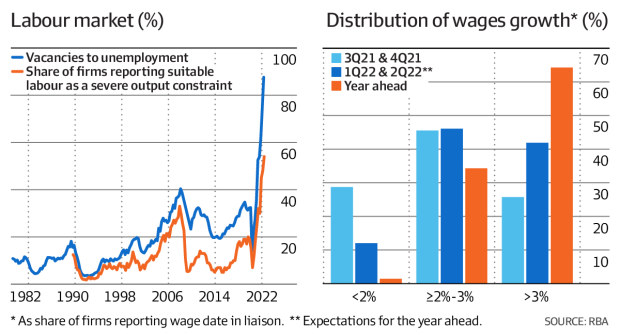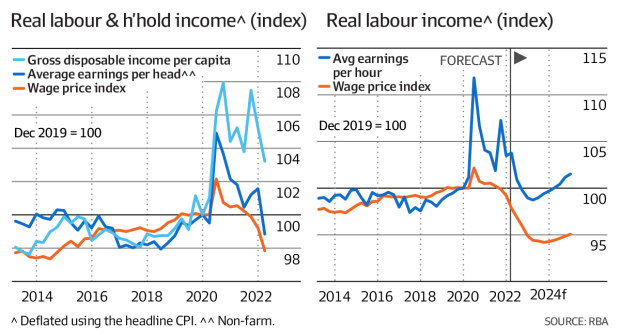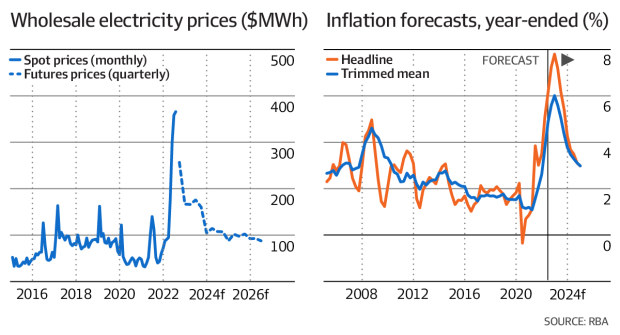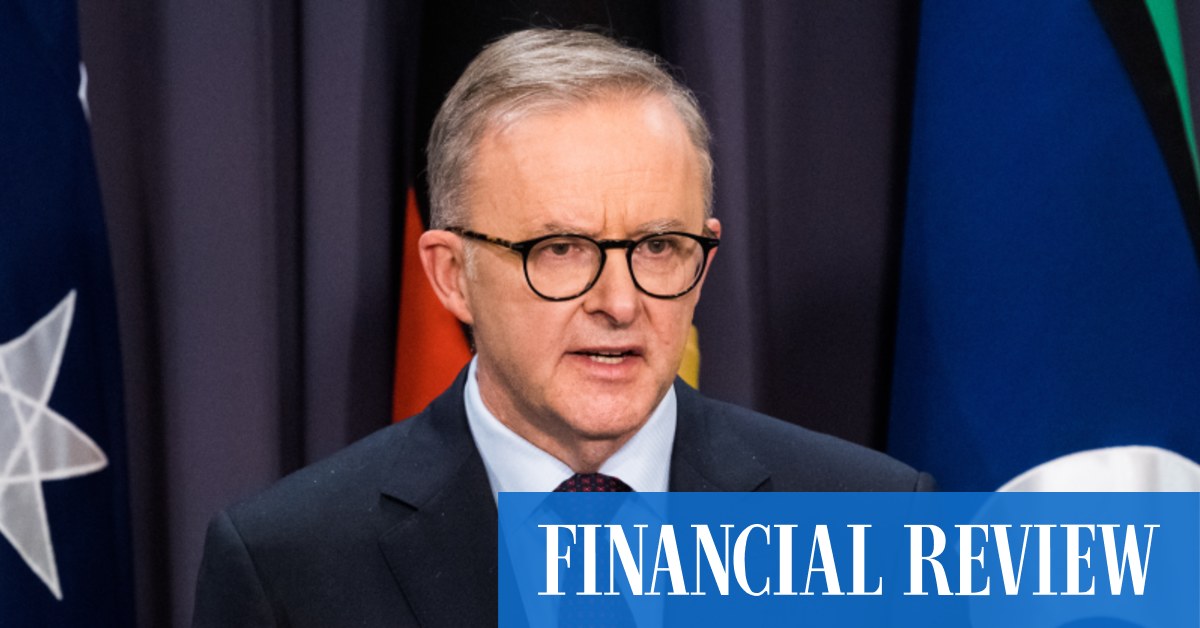“We don’t see that it will hit the double figures that are being spoken about in Europe and in some other destinations,” Mr Albanese said.
His comments come as economic policymakers walk a narrow path to bring inflation to heel without sparking a local recession, amid decades-high inflation, rising interest rates, a 48-year low 3.5 per cent jobless rate, and record terms of trade that is sparking more record trade surpluses.
The attempt to engineer a soft landing for the domestic economy comes as growing anger at the rising cost of living and falling real wages tests the nerve of the RBA and the government to make tough but necessary calls.

The RBA said headline and underlying inflation would return to the bank’s 2 per cent to 3 per cent target band by late 2024, but a shift in inflation psychology could spark high wages growth in such a tight labor market.
“The effect of high inflation and cost-of-living pressures on wage- and price-setting behavior is a material risk to the inflation outlook,” the bank said.
A driving force behind the strong growth in goods and services prices is gas and electricity bills, which are set to rise 10 per cent to 15 per cent in the second half of the year due to the turbulence in the local energy market.
The RBA this week pressed ahead with a third straight 0.5 percentage point inflation-fighting interest rate rise, taking the official cash rate from a record low 0.1 per cent in May to 1.85 per cent, with more increases to come.
In its quarterly monetary policy update on Friday, the bank downgraded economic growth to 3.2 per cent this year, 1.8 per cent in 2023 and 1.7 per cent in 2024 as higher cost of living and rising interest rates stymie activity.
The bank also forecast the unemployment rate to fall to 3.4 per cent later this year, before slowing rising back to 4 per cent in 2024.
Real wages will not rise for another 18 months
There is currently about one unemployed person for each job vacancy, which, along with soft migration, is placing pressure on businesses.
“Hiring intentions reported by firms in surveys and the bank’s liaison program remain strong,” the RBA said.
“However, firms have also reported that finding suitable labor is a significant constraint on activity, with some expressing concerns about achieving their desired increases in headcount in the tight labor market.

“Firms have responded to labor availability issues by offering higher wage increases for specific workers, emphasizing non-wage remuneration, and hiring less experienced or less qualified staff than previously.”
The tight labor market is expected to slowly flow through to worker wages.
Wages growth is expected to pick up to 3 per cent this year, 3.6 next year and 3.9 per cent in 2024, with the bank’s business liaison program suggesting more than 60 per cent of businesses expected to give pay rises above least 3 per cent, while just over 30 per cent expect 2 per cent to 3 per cent.
But with inflation running well ahead of pay rises, real wages will not rise for another 18 months or more, according to the RBA. Under current assumptions, real wages will fall to 2008-09 levels over the next short while.
Treasurer Jim Chalmers said the result reinforced the need for responsible cost-of-living relief in the October budget, easing capacity constraints and increasing productivity over the long run, while the union movement said 2024 was too long to wait for real wages growth and demanded action.
“The cost-of-living crisis, and now the rapid and brutal hike in interest rates is forcing many workers to deplete their savings. They simply cannot withstand their wages continuing to go backwards in real terms,” said Michele O’Neil, president of the Australian Council of Trade Unions.
Commonwealth Bank head of Australian economics Gareth Aird said at face value, the latest forecasts were not a good news story for households.
“The weaker outlook for real incomes as well the rapid pace of interest rate hikes delivered to date and the expectation of further rate rises has meant the RBA has downwardly revised their outlook for GDP growth,” he said.
CBA tips inflation to fall faster than the RBA
Demonstrating the high degree of uncertainty among policymakers and economists about the economic outlook, CBA is forecasting inflation to fall much faster than the RBA to back within the target band by late 2023.
“We anticipate a number of the forces that have driven the spike in inflation to weaken and/or dissipate in 2023…given we think that the household sector will struggle more under the weight of higher interest rates.”
Some cost-of-living relief may be on the way from global oil prices slumping to pre-Ukraine war levels in later week trading. Brent Crude was trading around $US94 ($135) a barrel on Friday, down from $US110 in late July.

That will flow through to lower pump prices – which, in addition to helping household budgets, will also provide some political cover to the Albanese government to not extend the $3 billion six-month fuel tax cut, which, given the state of the federal budget it is unaffordable.
Mr Albanese on Friday said it was important fiscal policy (the budget) worked in tandem with monetary policy (the RBA’s official interest rate) towards the same objectives.
“One of the things that the government can do is constrain spending through fiscal prudence,” he said.
“One of the reasons why we’re bringing down a budget in October, given there was a budget just in March, is to go through line by line and look for savings that can be made, to rip the waste which is there out of the budget.
“That’s part of the context of why we are doing that.”
